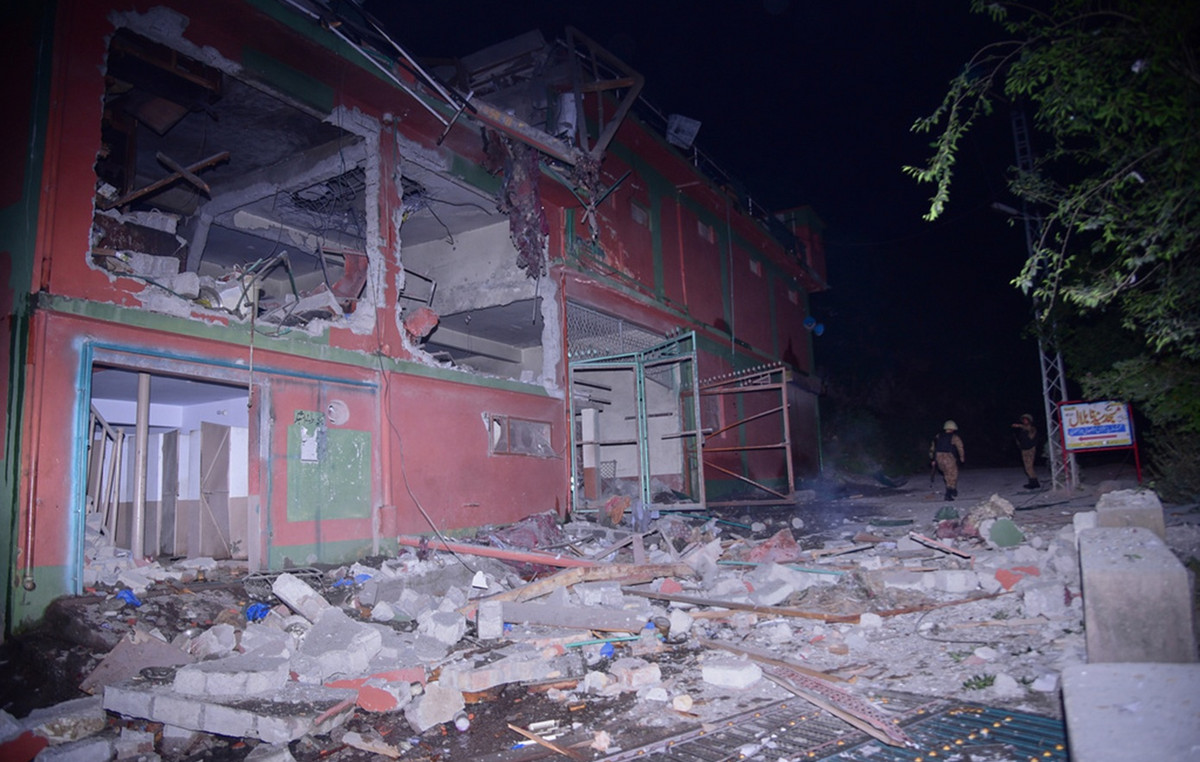With the first film released in 1968 telling the story of an astronaut who accidentally arrives on an Earth dominated by monkeys, the franchise Monkey's Planet there are already nine feature films between sequels, remakes and reboots .
The works are divided into a first series, with five feature films released between 1968 and 1973, and another with productions made between 2001 and 2024. Find out which films tell this story.
See the chronological order of the films
“Planet of the Apes” (1968)
Based on the book “La planète des singes”, by Pierre Boulle, the film tells the story of an astronaut who survives a space mission, but ends up on a planet like Earth. In it, a race of talking monkeys dominates and enslaves human beings, who are mute.
In the cast, Charlton Heston, actor from “Ben-Hur” (1959); Roddy McDowall; Linda Harrison; and Kim Hunter. Directed by Franklin J. Schaffner, known for “Patton, Rebel or Hero?”, from 1970, and “Meninos do Brasil”, from 1978.
The film received an Oscar for “Best Makeup” (for John Chambers) and nominations for “Best Costume Design” and “Best Soundtrack”.
“Back to the Planet of the Apes” (1970)
In the sequence, another astronaut crosses the time barrier in search of his colleague who, in the first film, reaches the planet of the apes. The mission leads to the underground city where mind-controlling mutant humans who worship atomic bombs live.
The film grossed US$19 million (about R$96.5 million) at the box office and was directed by Ted Post. Due to a disagreement between the producers and Charlton Heston, protagonist of the first feature, his participation ended up being reduced to the beginning and end of production.
“Escape from the Planet of the Apes” (1971)
In the film, the chimpanzee couple Cornelius and Zira escape in the spaceship left by human astronauts and end up on Earth in the 1970s. At first, they are treated like celebrities, but later they begin to be persecuted, when the United States government realizes that the The presence of primates could bring an end to human domination.
This was the only film in the franchise that was made with a sequel in mind, even if it yielded low returns, and which left the action aside for debates about intolerance and inclusion.
“Conquest of the Planet of the Apes” (1972)
The plot takes place 13 years after the previous film, in 1991. At that time, monkeys are slaves to humans, used for tasks such as shopping, waiting tables or cleaning. Caesar, the son of Cornelius and Zira, is protected by a circus owner, but one day ends up becoming leader and leading his fellow primates to dominate humans.
Directed by J. Lee Thompson, the film stars Roddy McDowall, Don Murray, Ricardo Montalban, Hari Rhodes and Natalie Trundy.
“Battle for the Planet of the Apes” (1973)
The fourth and final film in the first series of the franchise was directed by J. Lee Thompson, the same as the previous film.
In it, Caesar tries to keep peace between men and apes, but fails and the primates start a civil war. Meanwhile, human survivors of the nuclear war discover how to enter the city of apes and try to regain control of the planet.
“Planet of the Apes” (2001)
After 28 years since the release of the last film in the franchise, director Tim Burton made a remake of the 1968 production, with changes to the ending of the plot that generated criticism from viewers.
The cast includes Mark Wahlberg (“Ted”), Tim Roth (“Pulp Fiction”), Helena Bonham Carter (“Sweeney Todd”) and Michael Clarke Duncan (“Waiting for a Miracle”).
Similar to the story of the first film, astronaut Leo Davidson arrives on a planet inhabited by apes who treat humans as slaves. However, with the help of a monkey named Ari, Leo starts a rebellion.
At the Golden Raspberry Awards, the film won the awards for “Worst Remake or Sequel”, “Worst Supporting Actor” for Charlton Heston and Worst Supporting Actress for Estella Warren.
“Rise of the Planet of the Apes” (2011)
Directed by Rupert Wyatt, the film works as a reboot of the film series, narrating the origin of the entire story and restarting the franchise. The cast includes Andy Serkis, James Franco, Freida Pinto and Tom Felton.
In the story, a scientist tests a medium discovery on a chimpanzee named Caesar, who develops human-like intelligence and emotions. From this, a battle begins to determine which species will dominate the planet.
The film was nominated for an Oscar for “Best Visual Effects”, which it lost to “Hugo”.
“Planet of the Apes: Showdown” (2014)
Ten years after gaining their freedom, Caesar the ape and his peers live in a forest near San Francisco while humans face one of the biggest epidemics of all time, caused by a virus created in a laboratory.
It was directed by Matt Reeves — “The Batman”, 2022 — and this was the eighth highest-grossing feature in the year of release, totaling US$700 million (around R$3.5 billion).
“War for the Planet of the Apes” (2017)
In the story, apes engage in a deadly conflict with an army of humans and suffer unimaginable losses. With that, Caesar fights an epic battle that determines the future of both species and the planet.
Maintaining the direction of Matt Reeves, the film has renewals in the cast, including Woody Harrelson, Steve Zahn and Amiah Miller.
This was to be the last production of the franchise. However, due to the high profit obtained from the film — which totaled US$490.7 million (around R$2.5 billion) — the story continued.
“Planet of the Apes: Reign” (2024)
The film is set several generations after the events of 2017 and centers on Noa, played by Owen Teague, a naive but brave young primate. When her peaceful eagle-breeding clan is attacked and her family taken away, Noa sets out to find them. The actors Freya Allan and Lydia Peckmam join the protagonist.
The science fiction was directed by Wes Ball, known for the “Maze Runner” trilogy.
Source: CNN Brasil
I’m Robert Neff, a professional writer and editor. I specialize in the entertainment section, providing up-to-date coverage on the latest developments in film, television and music. My work has been featured on World Stock Market and other prominent publications.







